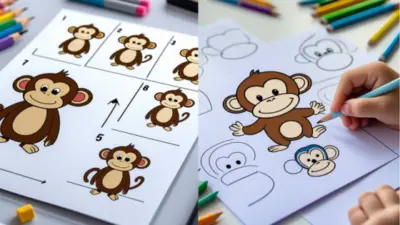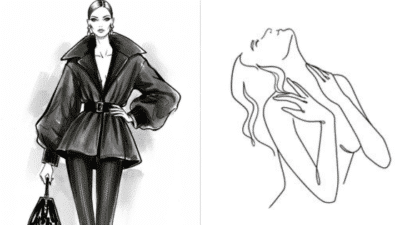Horse drawing is a captivating art form that combines technical skill with a deep appreciation for one of nature’s most majestic creatures. Understanding horse anatomy and movement is essential for artists looking to capture their elegance and power in drawings. This artistic endeavor not only enriches an artist’s portfolio but also fosters a unique connection with horses.

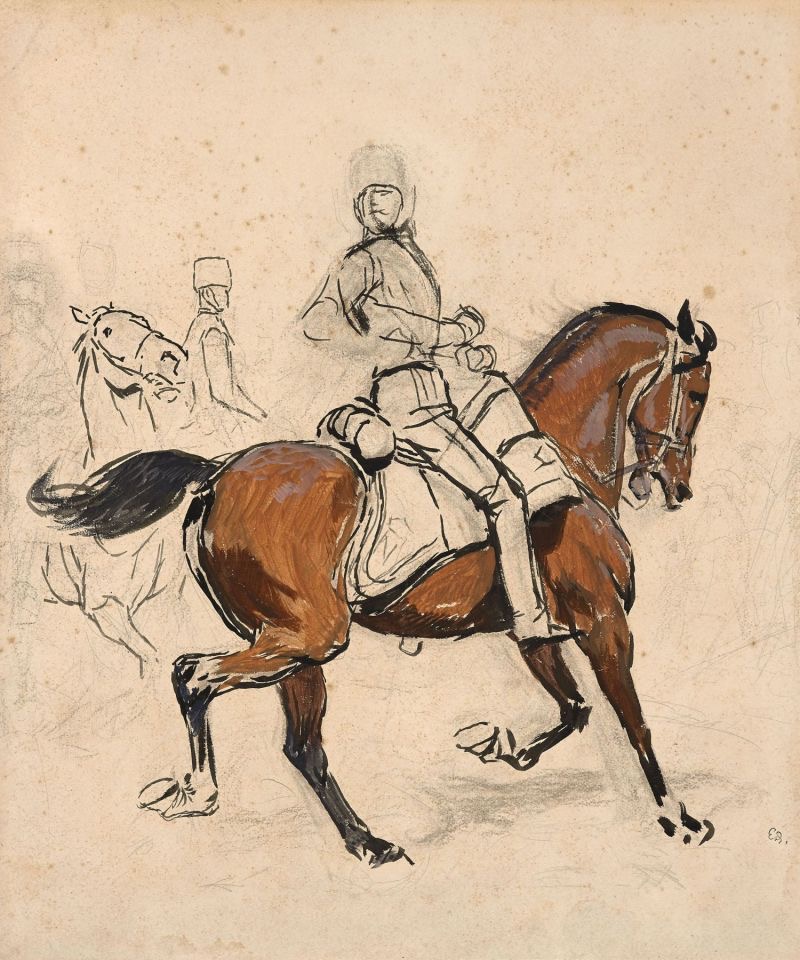
Artists can choose from various drawing techniques and styles, each offering a different way to express the beauty of a horse. From realistic representations to more abstract interpretations, the approach can vary widely. With the right materials, anyone can create stunning representations of these animals that reflect their individual style.
Moreover, learning about different horse breeds and their unique traits can enhance an artist’s ability to depict them accurately. The journey encourages exploration and creativity, making it an enriching experience for both novice and experienced artists alike.
Key Takeaways
- Mastering horse anatomy enhances drawing accuracy and expression.
- Different techniques and tools can elevate the artistic process.
- Understanding horse breeds adds depth to artistic representations.
History of Horse Drawing
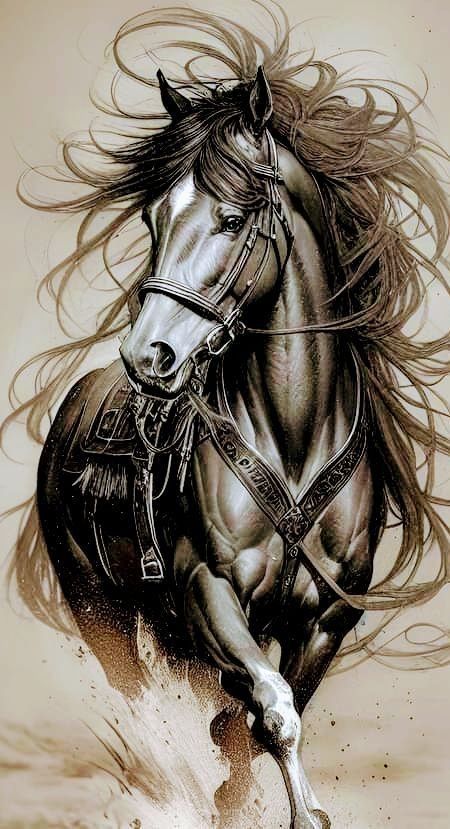
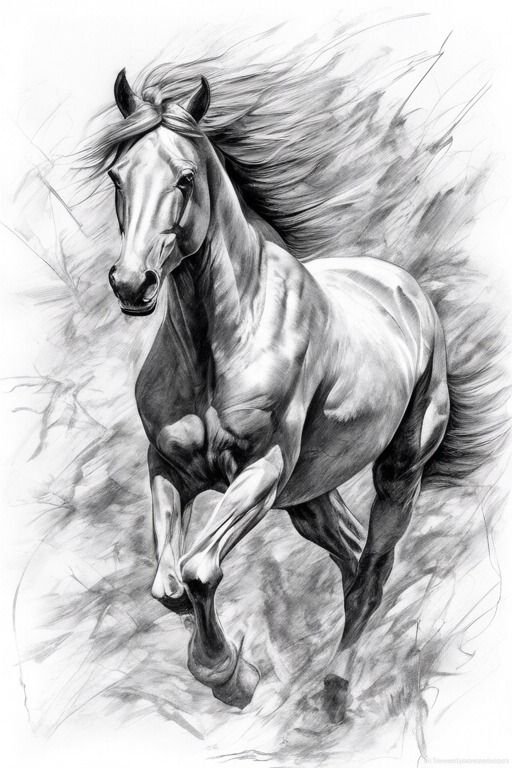
Horse drawing has evolved significantly over the centuries, reflecting changes in artistic techniques, cultural significance, and the relationship between humans and horses. This art form combines both historical context and aesthetic appreciation, highlighting the various interpretations and styles that have emerged.
Ancient Representations
Ancient cultures have long depicted horses in their artwork. Cave paintings in places like Lascaux, France, show horses alongside other animals, suggesting their importance in early human life. These images often reflect the horses’ role in hunting and survival.
In ancient Mesopotamia, artisans created detailed sculptures and carvings of horses, signifying their status and utility in society. The Assyrian reliefs often displayed horses in battle, emphasizing their significance in warfare. Similarly, Greek pottery featured horses prominently, illustrating their use in chariot racing and mythology.
Medieval to Renaissance
During the Medieval period, horse drawings became more symbolic. Horses represented nobility and chivalry in illuminated manuscripts and tapestries. Artists focused on the horse’s physical attributes, often illustrating their anatomy and movement in detailed studies.
The Renaissance brought a renewed interest in realism and perspective. Artists such as Leonardo da Vinci contributed significantly to horse anatomy studies. His sketches not only captured the horse’s form but also its power and grace. Other notable Renaissance artists, like Albrecht Dürer, also created intricate horse drawings that highlighted their elegance and strength.
Modern Horse Art
The 19th and 20th centuries saw a diversification of horse art styles. Impressionist painters such as Edgar Degas portrayed horses in motion, capturing their dynamism and energy. This broke away from traditional, static representations, focusing on how horses interacted with their environment.
Contemporary artists like George Stubbs and Frederic Remington depicted horses in various contexts, blending realism with expressive techniques. Their works challenge viewers to see beyond the surface and explore the relationship between humans and horses. In modern times, horse drawing continues to inspire artists, reflecting both artistic experimentation and cultural connections.
Horse Anatomy for Artists
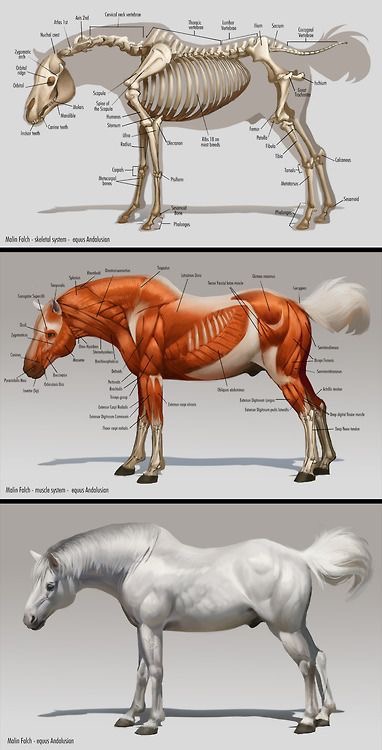
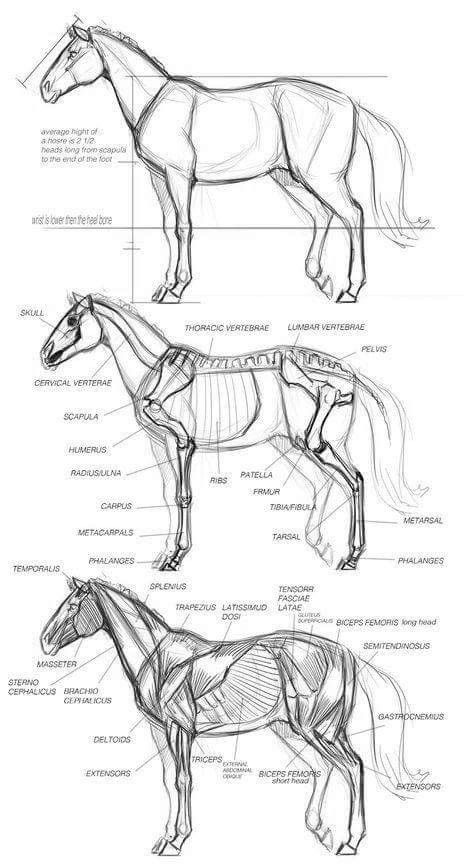
Understanding horse anatomy is vital for accurate representation in art. Knowledge of the musculoskeletal structure, proportions, and distinctive features allows artists to create realistic and dynamic equine representations.
Musculoskeletal Structure
The horse’s musculoskeletal system comprises bones, muscles, tendons, and ligaments.
- Bones: A horse has approximately 205 bones, forming a robust skeleton essential for support and movement. Key bones include the skull, vertebrae, ribs, and limbs.
- Muscles: Horses have both superficial and deep muscle layers. Major muscle groups include the trapezius, latissimus dorsi, and gluteal muscles, which impact the horse’s movement and posture.
- Tendons and Ligaments: These connective tissues provide stability and strength, especially in the limbs. Important structures include the flexor tendons and the suspensory ligament.
Artists should study these components to depict accuracy in movement and form.
Proportions and Measurements
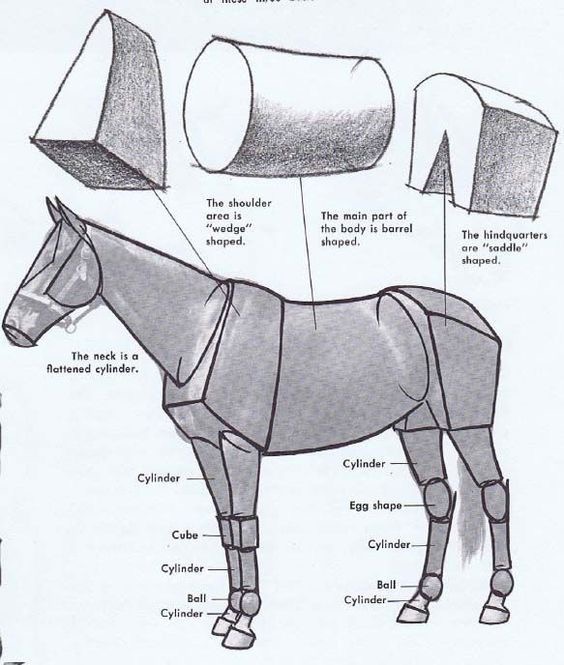
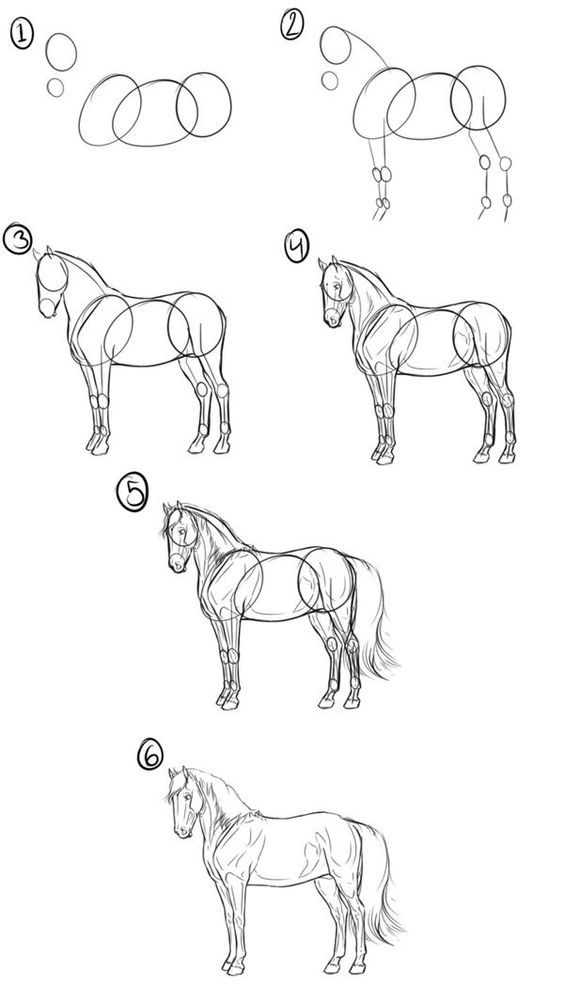
Proportional accuracy is essential for realistic horse drawings.
- Body Ratio: The horse is often measured in “hands” (1 hand = 4 inches). A typical horse height can range from 14 to 17 hands, depending on the breed.
- Head to Body Ratio: The horse’s head is generally about 1:3 compared to its body length. Its eye is positioned approximately halfway down the length of the head.
- Leg Length: The length of a horse’s leg is roughly equal to the length of its body from the point of shoulder to the point of the buttock.
These proportions can vary among breeds, so artists should focus on the specific type being represented.
Details and Features
Attention to specific details enhances the realism of horse drawings.
- Ears and Eyes: Horses have expressive ears and large eyes that convey emotions. Ears should be depicted as mobile, able to rotate towards sounds.
- Muzzle and Mouth: The muzzle is broad and features a sensitive area known as the “philtrum.” Artists should capture the texture and contours here.
- Coat and Markings: Horse coats come in various colors and patterns, such as roan, bay, and appaloosa. Unique markings may include blazes and socks, which add character.
Focusing on these features allows for more lifelike and engaging horse illustrations.
Art Materials and Tools
Creating horse drawings requires a variety of materials and tools that cater to both traditional and digital methods. The choice of supplies can significantly impact the quality and feel of the artwork.
Traditional Drawing Supplies
Traditional drawing relies on a range of supplies that artists can use to depict horses effectively. Common tools include:
- Pencils: Graphite pencils of various hardness (e.g., 2H for fine lines, 4B for darker shading) are essential for sketching.
- Erasers: A kneaded eraser can gently lift graphite without damaging the paper, while a rubber eraser is suitable for more precise corrections.
- Paper: Heavier weight drawing paper (at least 80lb) holds up better when working with various mediums.
- Inks and Pens: Fine-tip ink pens are ideal for detailed line work, while brush pens provide flexibility in strokes.
Textures and shading can be enhanced through blending stumps and charcoal. Each medium contributes to the artwork’s depth and realism.
Digital Drawing Equipment
Digital drawing has become increasingly popular, offering unique advantages for horse illustration. Key equipment includes:
- Graphics Tablet: A quality tablet, like a Wacom or Huion, allows for precise input and varied pressure sensitivity.
- Stylus: A pressure-sensitive stylus mimics traditional drawing tools, enabling detailed line work and shading.
- Software: Programs such as Adobe Photoshop or Procreate offer diverse brushes and editing options tailored to different artistic styles.
Combining these elements leads to flexible and dynamic illustrations. Artists can easily adjust colors, layers, and effects without the constraints of traditional materials.
Drawing Techniques and Styles
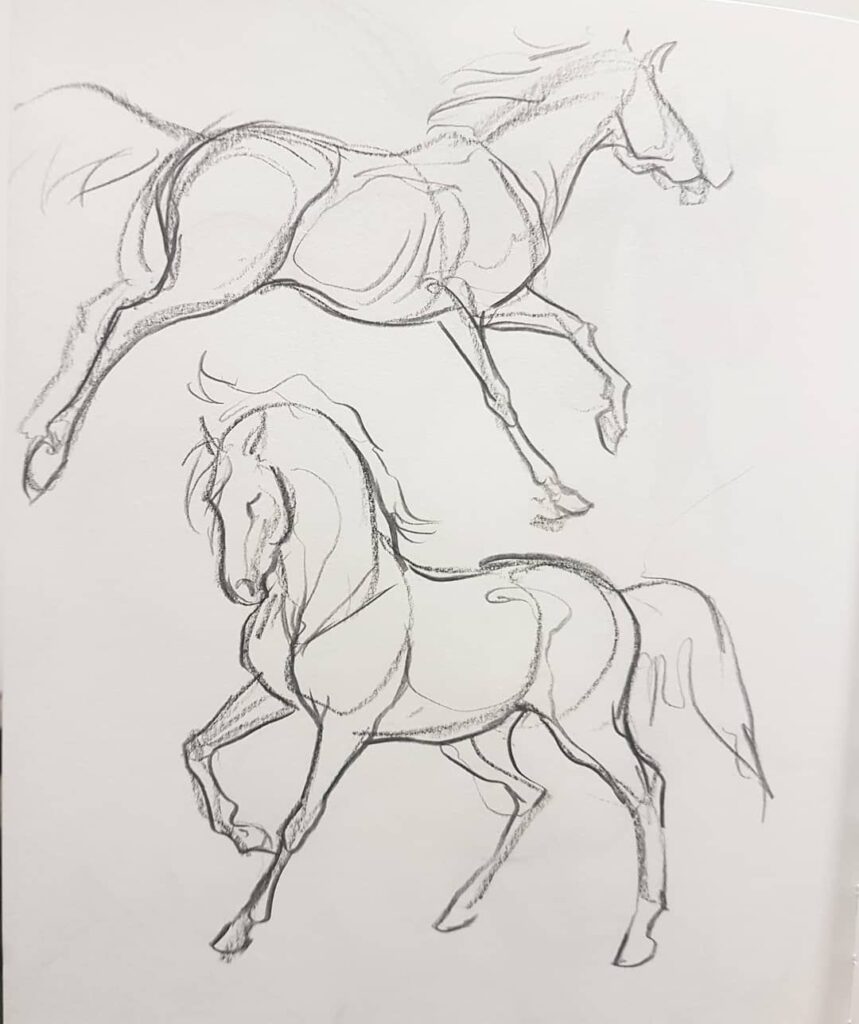
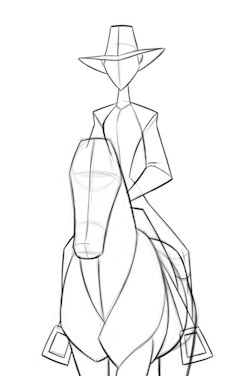
Various techniques and styles can enhance the depiction of horses in art. These methods allow the artist to capture the creature’s form, movement, and character effectively.
Sketching the Basic Form
Starting with basic shapes is crucial when sketching horses. Artists often utilize ovals and rectangles to outline the horse’s body structure.
- Proportions: Understanding horse anatomy helps maintain proper proportions. The head is usually about one-eighth of the horse’s height.
- Basic Shapes: Use circles for joints and ovals for the ribcage. This helps in visualizing the horse’s posture and stance.
- Construction Lines: Lightly draw lines to indicate movement and balance. These can be adjusted as the sketch progresses, aiding in refining the overall structure.
Shading and Texture
To create depth, shading is essential in horse drawing. Artists typically use a variety of techniques for realistic effects.
- Light Source: Establish a consistent light source to understand where shadows will fall. This helps in creating dimension.
- Hatching and Cross-Hatching: These techniques can add texture to the horse’s coat. Use fine lines for light areas and denser hatching for deeper shadows.
- Blending Techniques: Tools like blending stumps or fingers can smooth transitions between light and shadow. This creates a more lifelike appearance.
Creating Movement and Expression
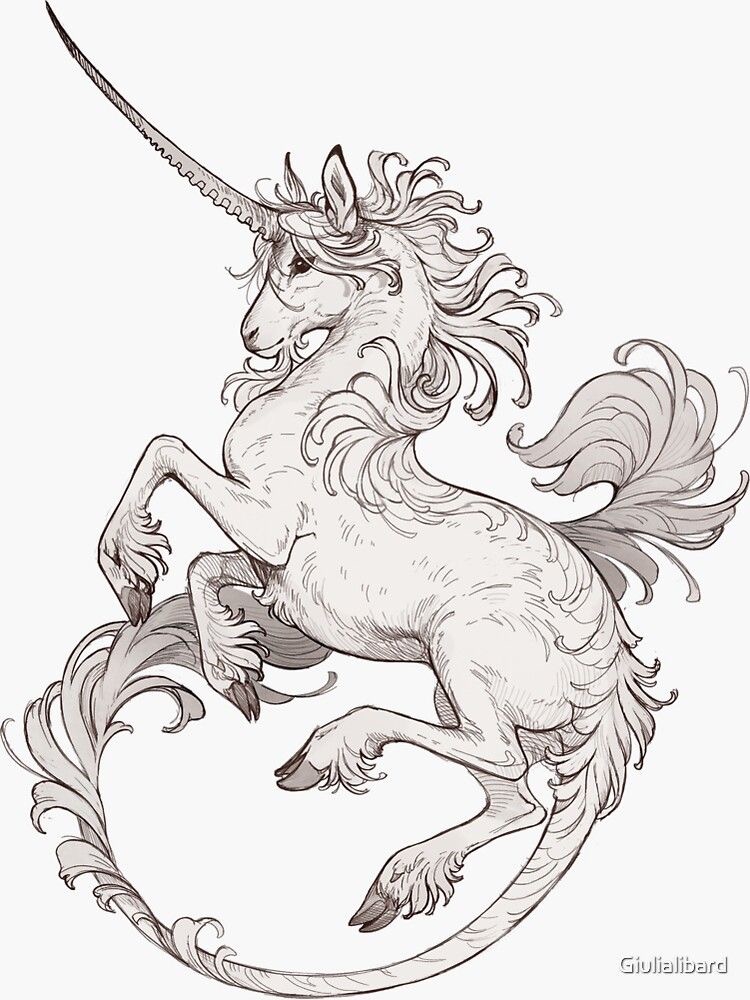
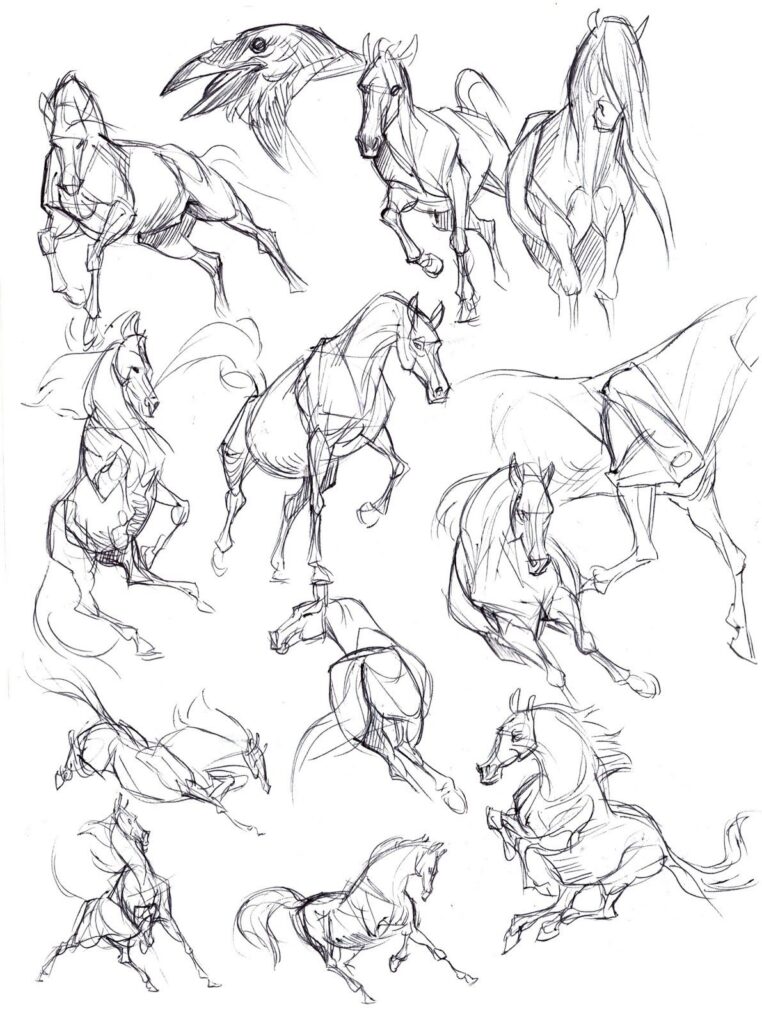
Capturing movement and personality is vital in horse art. Artists employ specific strategies to convey dynamism.
- Dynamic Poses: Choose active postures, like galloping or rearing, to showcase the horse’s energy. Reference photos can assist in identifying natural stances.
- Facial Expressions: Focus on the eyes and ears, which convey emotion. Subtle changes here can project excitement or calm.
- Line Quality: Varying line thickness can suggest motion. Thicker lines may indicate power, while lighter lines can portray gracefulness.
Each technique contributes to a deeper understanding of how to represent horses stylishly and effectively.
Step-by-Step Drawing Guide
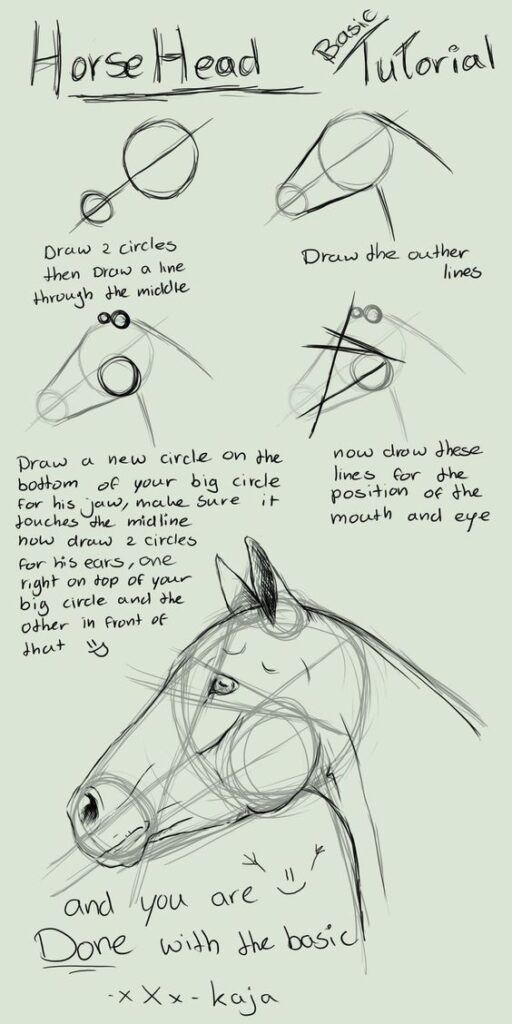
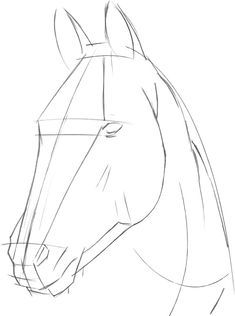
A structured approach helps in creating an accurate horse drawing. By breaking down the process into manageable steps, artists can build their skills gradually and effectively.
Starting with Simple Shapes
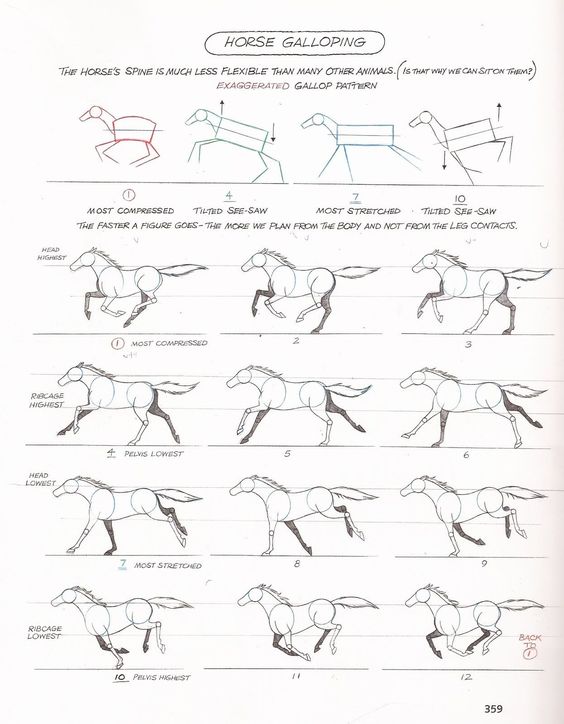
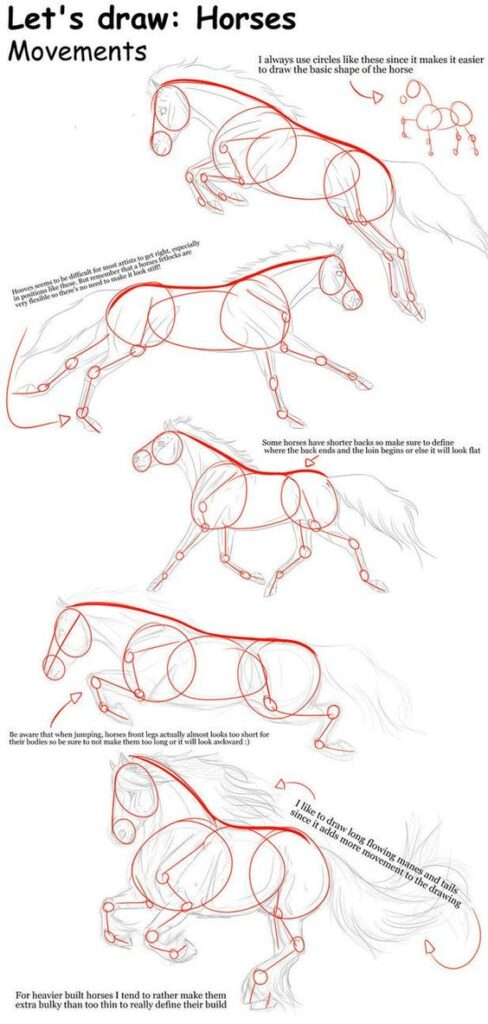
Begin by sketching basic shapes to represent the horse’s body, head, and legs. Use circles for the head and joints, paired with ovals and rectangles for the body and legs.
- Head: A circle serves as the foundation.
- Body: An elongated oval represents the torso.
- Legs: Use rectangles for the larger sections and circles for joints.
These shapes should be lightly drawn, acting as guidelines. This stage focuses on proportions and overall stance. Make adjustments as needed to ensure that the shapes align correctly, facilitating a better structure for the horse.
Adding Details and Refinements
Once the basic shapes are in place, refine the drawing by adding details like the mane, tail, and facial features.
- Facial Features: Outline the eyes, nostrils, and ears with curving lines.
- Mane: Flowing lines represent the mane’s movement and texture.
- Legs and Hooves: Transition from the basic shapes by adding muscle definition and hoof details.
Pay attention to the horse’s posture and any unique markings. This step requires patience, focusing on subtle modifications to achieve realism.
Finalizing the Drawing
In the final stage, artists enhance the sketch with defined lines and shading.
- Outlining: Go over the refined sketch with a darker pencil or pen.
- Shading: Use gentle strokes to create depth, especially around the muscles and joints.
Consider light sources to determine where shadows fall. Erase any unnecessary guidelines from earlier steps. The final touches, like the horse’s expression and additional details, will complete the drawing, bringing it to life.
Composition and Perspective
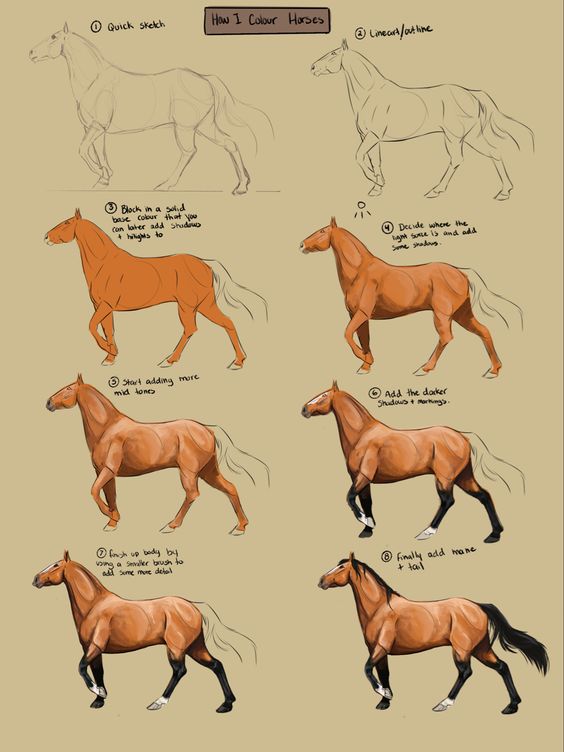
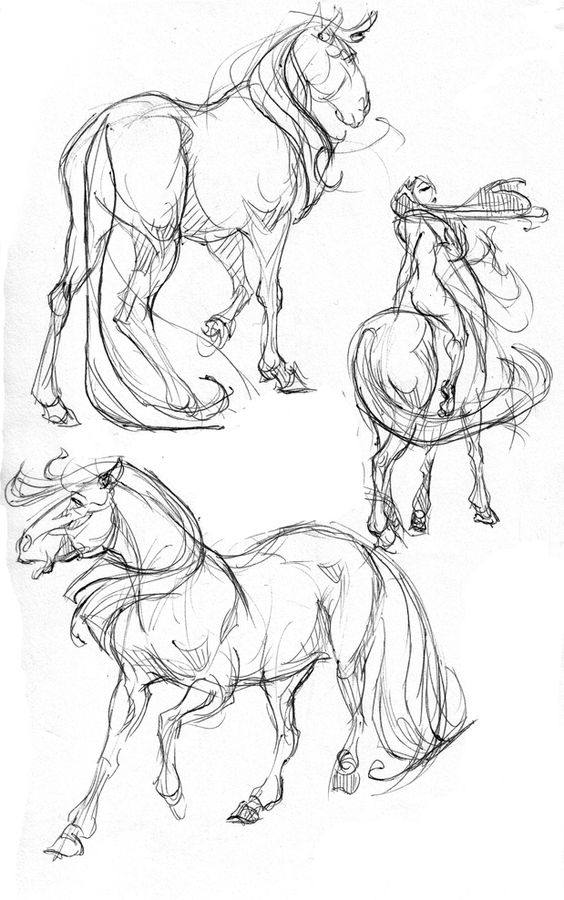
Effective composition and perspective are crucial for creating a captivating horse drawing. Understanding how to position the horse within its environment enhances the artwork’s visual appeal and storytelling element.
Understanding Perspective
Perspective involves creating the illusion of depth in a drawing. Artists can achieve this by using techniques like linear perspective, where parallel lines converge at a vanishing point. This technique helps to depict a three-dimensional space.
To add realism, the artist should consider the horse’s size relative to its surroundings. Foreground elements appear larger, while background objects diminish in scale. Utilizing a horizon line establishes eye level and guides viewer attention.
Incorporating varying angles also enhances interest. A horse viewed in profile may convey speed, while a three-quarter view suggests depth. Such variations enrich the composition and engage the audience more effectively.
Incorporating the Horse into Landscapes
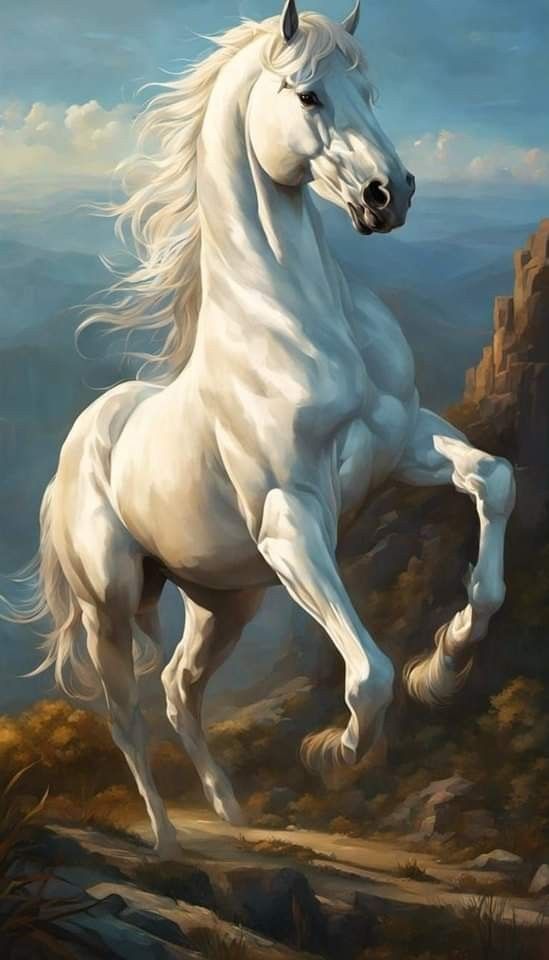
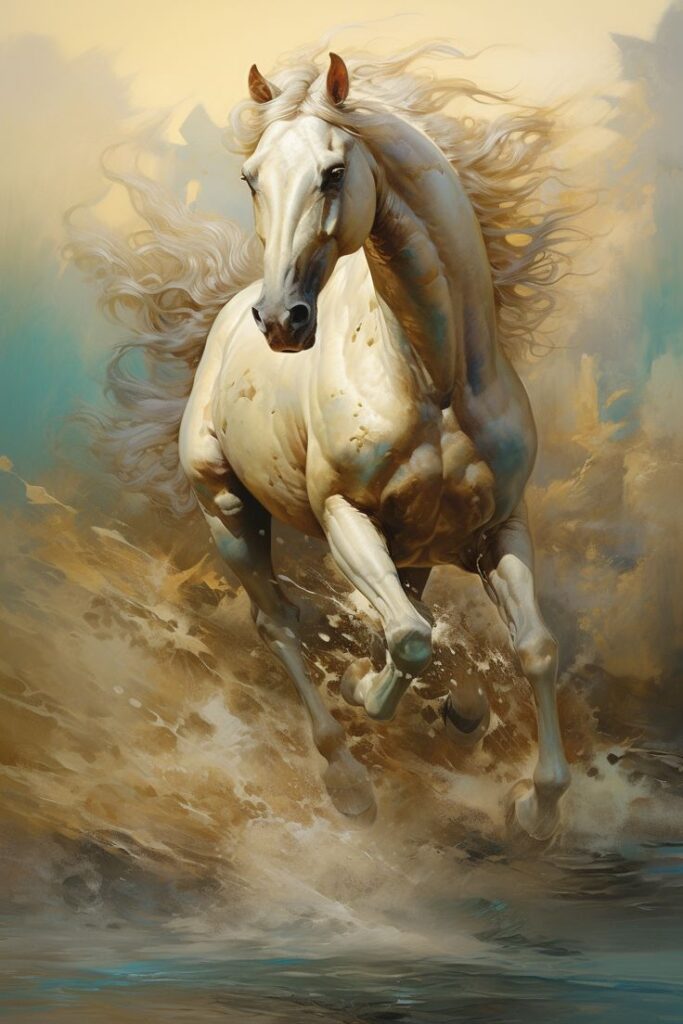
Positioning a horse within a landscape requires careful consideration of both scale and context. The setting must complement the horse’s characteristics and pose. For instance, a galloping horse in an open field exudes freedom and movement, while a standing horse near a barn reflects calmness and stability.
Artists should analyze the landscape elements, such as trees, hills, or water bodies, to create a balanced composition. Foreground details, like grass or flowers, provide texture and engagement for the viewer.
Additionally, adjusting the horse’s placement within the landscape can affect the mood. A horse situated against a sunset may convey tranquility, while one against a stormy sky may evoke tension. The interplay between the horse and its environment is key to communicating the intended message.
Coloring and Painting Techniques


Effective coloring and painting techniques can significantly enhance horse drawings. This section covers essential elements like selecting a color palette and employing blending and layering methods.
Choosing a Color Palette
When selecting a color palette for horse drawings, artists should consider the horse’s breed and coat type. For example, a chestnut horse may have warm reds and browns, while a grey horse will require various shades of grey and white.
Utilizing a color wheel can also assist in making harmonious choices. Complementary colors can create contrast, while analogous colors provide a more subtle effect.
Artists should gather reference images to understand the specific hues present in different horse breeds. This practice helps in accurately representing the animal’s natural beauty and complexity.
Blending and Layering
Blending and layering are crucial for achieving depth and texture in horse illustrations. Using tools like blending stumps or brushes allows for smooth transitions between colors.
Artists can layer colors by starting with a base and gradually adding details. For instance, a base layer of tawny brown could be followed by a deeper chestnut for shading.
To create realistic highlights, artists might leave certain areas lighter or apply a thin layer of white or cream on top of darker shades.
It is important to work gradually, as building layers can make the artwork more vibrant and lifelike. Maintaining pencil pressure control during blending prevents over-saturation of the paper.
Different Breeds and Their Traits
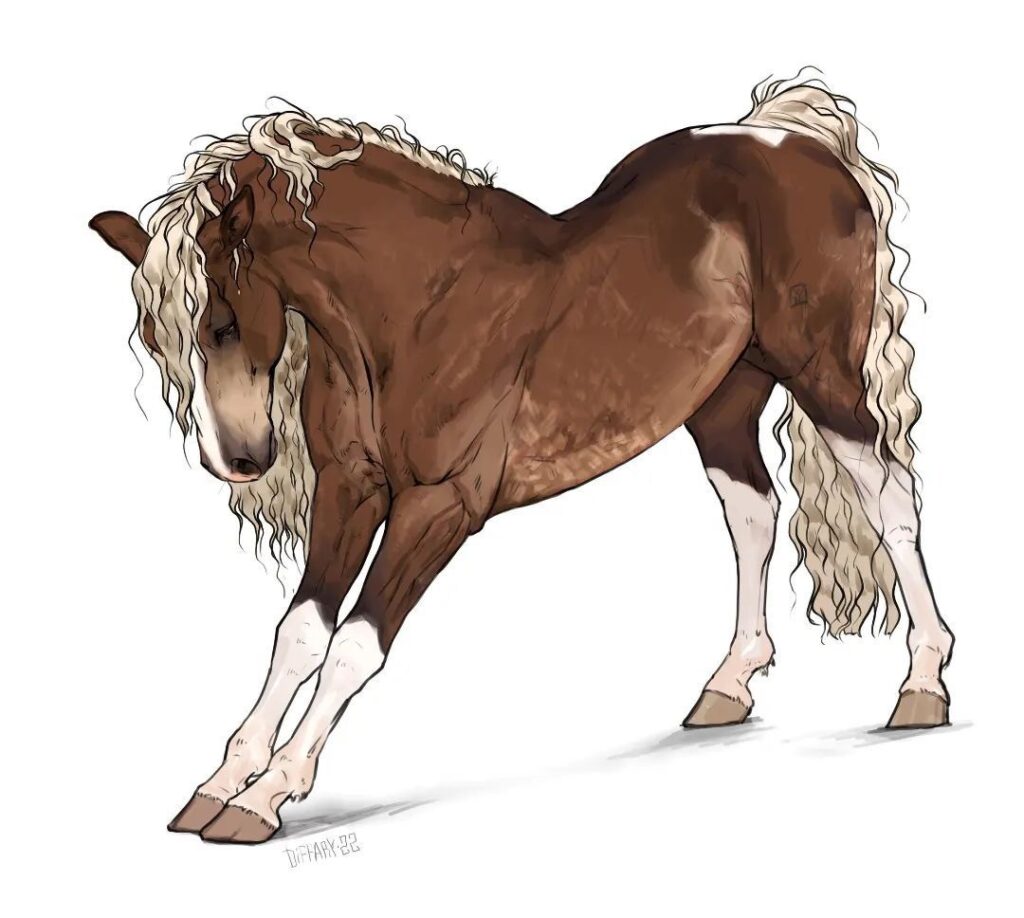

Horses come in various breeds, each with unique characteristics. These traits influence not only their appearance but also their temperament and abilities.
Arabian
- Known for endurance and speed.
- Distinctive head shape and high tail carriage.
- Often used in long-distance racing.
Thoroughbred
- Renowned for racing prowess.
- Tall and slim with long legs.
- High energy and strong drive.
Clydesdale
- Recognizable for their size and strength.
- Feathering on their lower legs.
- Friendly and gentle disposition.
Appaloosa
- Characterized by spotted coat patterns.
- Versatile and adaptable to various disciplines.
- Good temperament, making them suitable for families.
Quarter Horse
- Best known for sprinting short distances.
- Stocky build with powerful hindquarters.
- Calm and reliable, popular in rodeo events.
Warmblood
- Bred for performance in equestrian sports.
- Athletic and versatile, they excel in dressage and jumping.
- Generally good-natured and trainable.
These breeds illustrate the diversity within the equine world, catering to different riding styles and preferences. Each breed’s traits facilitate specific tasks, making them valuable in various equestrian disciplines.
Inspirational Sources for Horse Drawing


Artists often find inspiration for horse drawing in various places. Observing real horses in their natural environment provides a wealth of anatomical and behavioral details.
Books and Literature
Reading books about horses can deepen one’s understanding. Titles like The Art of the Horse or Horses in Art showcase various styles and techniques.
Photography
Photographs capture horses in motion and stillness. Artists can study muscle tone, movement, and posture through reference photography.
Nature
The natural world offers diverse settings for horses. Drawing horses in different terrains can alter their appearance and highlight unique characteristics.
Art Communities
Joining art groups or forums allows for sharing and receiving feedback. Engaging with other artists can spark creativity and provide new ideas.
Museums and Galleries
Visiting galleries displaying equestrian art exposes artists to historical and contemporary depictions of horses. Analyzing different styles enriches personal technique.
Online Resources
Websites and social media platforms feature countless artworks and tutorials. They are great for keeping up with trends and discovering new illustrative methods.
These sources serve as valuable tools for anyone looking to enhance their horse drawing skills.
Presenting and Sharing Your Artwork


Sharing artwork, especially horse drawings, can enhance visibility and engagement. Artists can consider various platforms for showcasing their work.
Digital Platforms:
- Social Media: Instagram, Facebook, and Pinterest are ideal for visually-driven content.
- Art Communities: Websites like DeviantArt or ArtStation allow tutorials and critiques.
In-Person Sharing:
- Exhibitions: Participating in local art shows can attract a targeted audience.
- Workshops: Hosting or attending workshops invites collaboration and networking.
Promotional Materials:
Using high-quality prints, postcards, or business cards can help establish a professional presence. Artists should ensure that the images are clear and vibrant.
Artist Statements:
Creating a brief artist statement explains the inspiration and technique behind the work, providing context. This adds depth and engages viewers more effectively.
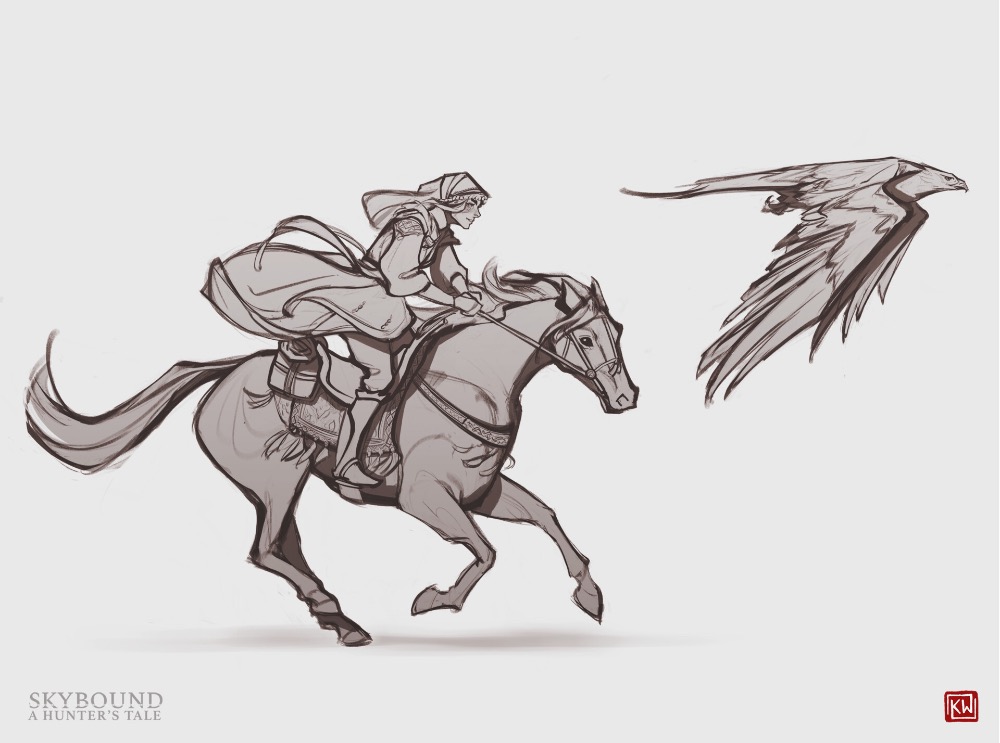
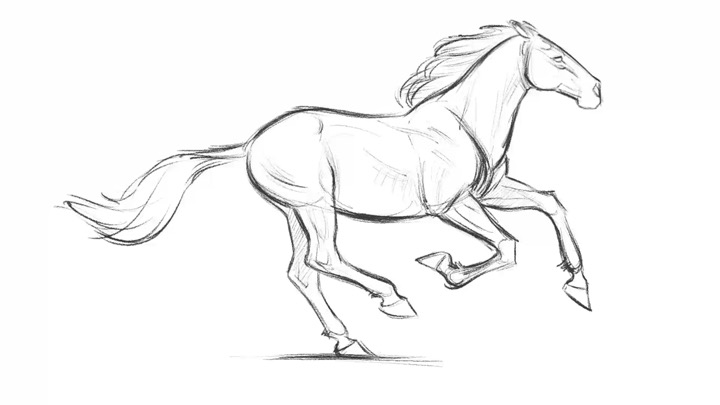
Feedback and Critique:
Actively seeking feedback can foster improvement. Engaging with peers or mentors enhances growth and offers new perspectives.
Networking:
Building connections with other artists can lead to collaboration opportunities. It also provides access to exhibitions and community events.
Presenting and sharing artwork requires careful planning. Using a mix of online and offline strategies maximizes exposure and creates meaningful connections within the art community.
Safety and Ethical Practices in Drawing Live Subjects
When drawing live subjects, such as horses, safety and ethics are paramount. Artists should prioritize the welfare of the animals and their own safety.
Key Safety Practices:
- Maintain a safe distance to avoid startling the animal.
- Use appropriate tools that do not pose risks.
- Ensure the drawing area is clear of hazards.
Ethical Considerations:
- Obtain permission if drawing horses in private settings.
- Respect the comfort of the animal; avoid invasive practices.
- Consider the environment; ensure it is calm and familiar to the horse.
Best Practices:
- Observe First: Spend time watching the horse’s behavior before starting to draw.
- Be Patient: Allow the horse to acclimate to the presence of the artist.
- Limit Distractions: Keep noise and movement to a minimum to maintain a relaxed atmosphere.
By adhering to these principles, artists can create a respectful and safe environment for both themselves and the live subjects they are drawing.
- 6.0Kshares
- Facebook0
- Pinterest6.0K
- Twitter3
- Reddit0
